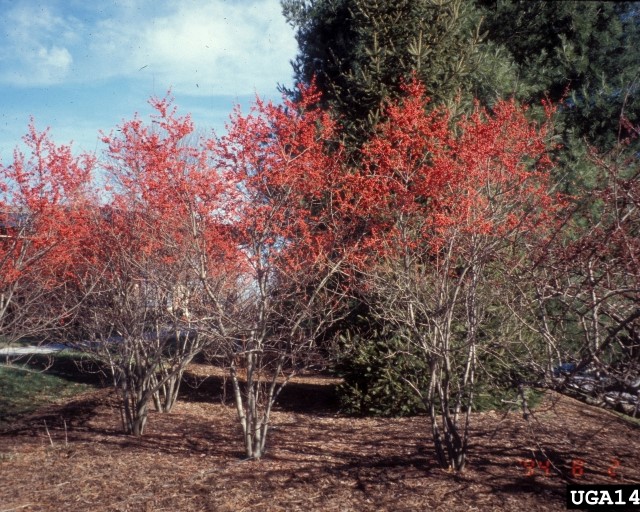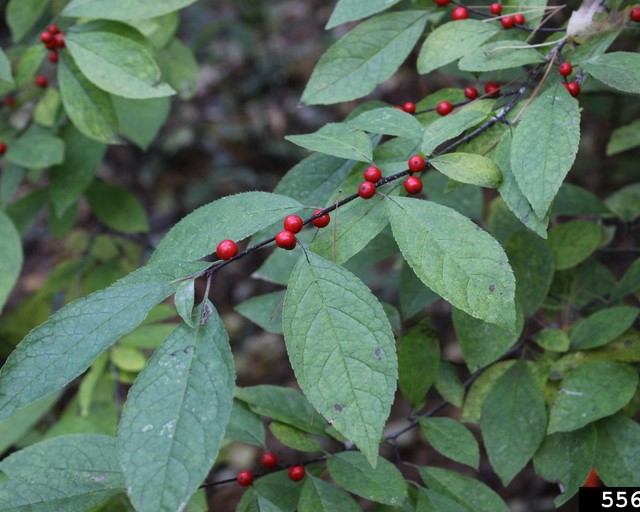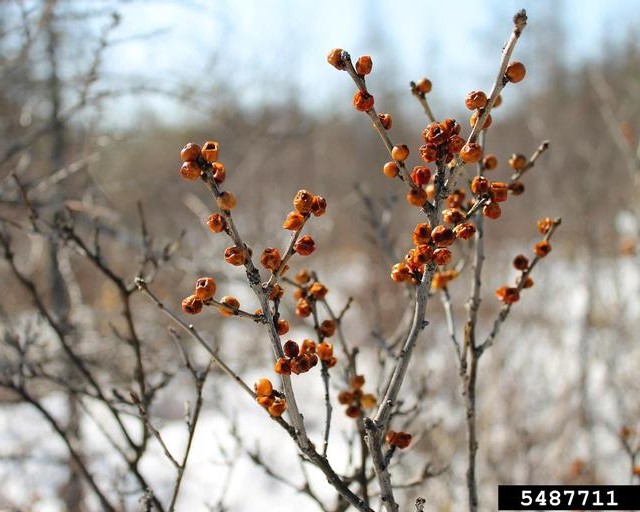12/2/2019
By: Dan Petters
Winterberry Holly (Ilex verticillata) is native to the eastern and generally northern half of the US, ending its range in the eastern parts of Minnesota. It is a dense, medium sized shrub, growing and spreading from 3 to 12 feet tall and wide. It is tolerant of wet and acidic sites, often found growing along streams, swamps, and in other low-lying wet areas. It can do well from full sun to part shade. Winterberry has glossy dark-green foliage in the summer, with beautiful, bright red berries that are persistent through the winter and into the early spring (giving it its common name). They provide significant winter forage for birds and small mammals, and excellent ornamental interest. In the spring, its numerous, small white flowers are favored by bees.
Winterberry holly is usually dioecious (separate male and female plants), so the presence of a male plant is necessary for the female plants to grow the characteristic red berries. The species has been popular for a while, and many cultivars are available in the nursery trade. Cultivars are usually smaller and more compact, and are usually less beneficial to pollinators and wildlife.
References:
Common winterberry. The Morton Arboretum. Accessed December 2, 2019. https://www.mortonarb.org/trees-plants/tree-plant-descriptions/common-winterberry
Ilex verticillata. Minnesota Wildflowers. Accessed December 2, 2019. https://www.minnesotawildflowers.info/shrub/winterberry
Ilex verticillata. Missouri Botanical Garden. Accessed December 2, 2019. https://www.missouribotanicalgarden.org/PlantFinder/PlantFinderDetails.aspx?kempercode=d440
Images:
Chris Evans, University of Illinois, Bugwood.org
Richard Webb, Bugwood.org
Rob Routledge, Sault College, Bugwood.org


